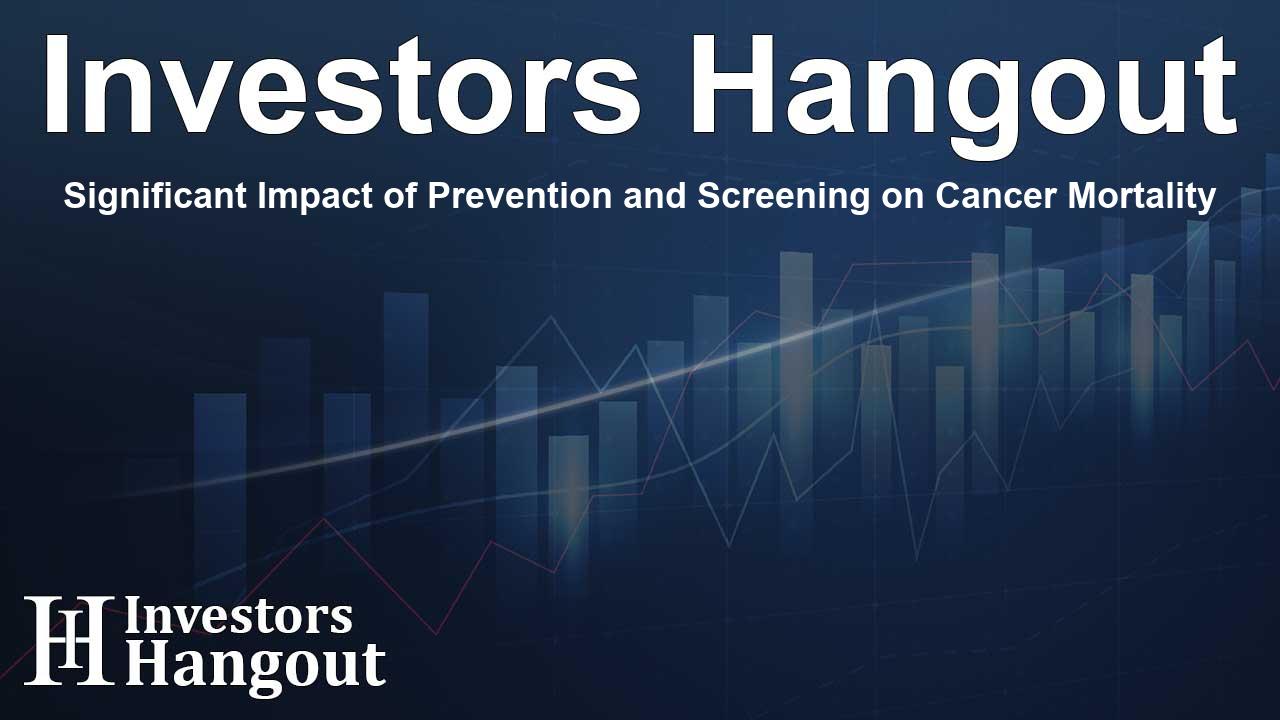Significant Impact of Prevention and Screening on Cancer Mortality

Revolutionary Findings in Cancer Mortality Reduction
In a groundbreaking study, researchers at the National Institutes of Health (NIH) have uncovered compelling evidence that cancer prevention and screening efforts have been instrumental in saving lives. Their analysis reveals that over the past 45 years, these strategies have prevented more deaths from five major cancer types than treatment advancements. This research, published in JAMA Oncology, focuses on breast, cervical, colorectal, lung, and prostate cancers, which collectively represent nearly half of all new cancer diagnoses and deaths.
Study Overview and Significance
Co-lead investigator Dr. Katrina A. B. Goddard emphasizes the unexpected result of this research. While many assume treatment methods are the primary factor in reducing cancer mortality, the analysis clearly shows the substantial impact of prevention and screening. An astounding 80% of deaths from these cancers averted in the studied timeframe were attributable to enhancements in preventive measures and screening practices.
Understanding the Core Findings
Among various interventions, smoking cessation stands out, preventing 3.45 million deaths specifically linked to lung cancer. Moreover, when examining individual cancer types, prevention and screening were prominent contributors to cervical, colorectal, lung, and prostate cancer mortality reductions. However, for breast cancer, advancements in treatment were the leading determinants in averted deaths.
The Role of Comprehensive Strategies
Dr. W. Kimryn Rathmell, another key researcher, advocates for an integrated approach combining effective prevention, screening, and treatment strategies. This research provides crucial insights into strategies that have historically succeeded in lowering cancer mortality rates, and it paves the way for broader implementation across diverse populations.
Statistical Insights into Cancer Deaths Averted
The study employs statistical modeling to estimate the contributions of prevention, screening, and treatment methods to deaths avoided between 1975 and 2020. The findings indicate that a total of 5.94 million deaths were prevented from the five types of cancer during this period, with a remarkable 4.75 million attributed to prevention and screening efforts.
Breakdown of the contributions reveals how specific interventions have influenced outcomes:
- Breast Cancer: 1 million deaths averted (out of 2.71 million) due to treatment methods and mammography screening.
- Lung Cancer: 3.45 million deaths averted (out of 9.2 million) with prevention through tobacco control accounting for 98%.
- Cervical Cancer: 160,000 deaths averted through screening methods including Pap tests and HPV testing.
- Colorectal Cancer: 940,000 deaths averted (out of 3.45 million), largely thanks to screening and polyp removal.
- Prostate Cancer: 360,000 deaths averted, with PSA testing contributing to 56% of those cases.
Future Directions for Cancer Prevention and Treatment
Dr. Goddard emphasizes the need for sustained investment in prevention and screening initiatives, highlighting the critical balance between these strategies and treatment innovations. The study also notes the potential for newer interventions, such as HPV vaccinations and enhanced lung cancer screenings, which were not widely applied during the study’s timeframe.
Efforts to improve accessibility to screening, such as self-collection options for HPV tests, can also play a significant role in reducing cancer death rates. The authors acknowledge that while the study focused on these five cancers, many other cancer types, including those with less effective preventative measures, could benefit from similar initiatives.
Conclusion: Optimizing Cancer Prevention Strategies
This pivotal research highlights the necessity of optimizing prevention and screening efforts to ensure that all populations, particularly underserved communities, have access to effective strategies. To minimize mortality rates from lethal cancers, such as pancreatic and ovarian cancers, the need for innovative approaches in prevention and screening is paramount.
As the NIH continues to lead the charge in cancer research, it remains committed to enhancing the tools available for cancer control and improving the overall quality of life for patients and their families.
Frequently Asked Questions
What was the key finding of the NIH study on cancer mortality?
The study revealed that prevention and screening efforts have saved more lives from five major cancers than treatment advancements over the past 45 years.
Which cancer types were analyzed in the study?
The study focused on breast, cervical, colorectal, lung, and prostate cancers due to their significant rates of diagnosis and mortality.
How many deaths were averted through prevention and screening interventions?
A total of 4.75 million deaths were averted from these five cancers as a result of prevention and screening initiatives.
Why are smoking cessation efforts critical?
Smoking cessation efforts accounted for a significant number of deaths averted, specifically 3.45 million from lung cancer, showcasing the impact of public health initiatives.
What are the implications of the findings for future cancer research?
The findings suggest a need for ongoing support and promotion of prevention and screening measures, alongside treatment innovations to effectively reduce cancer mortality rates.
About The Author
Contact Riley Hayes privately here. Or send an email with ATTN: Riley Hayes as the subject to contact@investorshangout.com.
About Investors Hangout
Investors Hangout is a leading online stock forum for financial discussion and learning, offering a wide range of free tools and resources. It draws in traders of all levels, who exchange market knowledge, investigate trading tactics, and keep an eye on industry developments in real time. Featuring financial articles, stock message boards, quotes, charts, company profiles, and live news updates. Through cooperative learning and a wealth of informational resources, it helps users from novices creating their first portfolios to experts honing their techniques. Join Investors Hangout today: https://investorshangout.com/
The content of this article is based on factual, publicly available information and does not represent legal, financial, or investment advice. Investors Hangout does not offer financial advice, and the author is not a licensed financial advisor. Consult a qualified advisor before making any financial or investment decisions based on this article. This article should not be considered advice to purchase, sell, or hold any securities or other investments. If any of the material provided here is inaccurate, please contact us for corrections.
